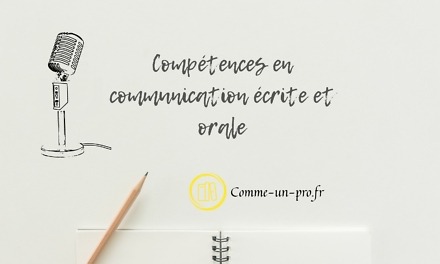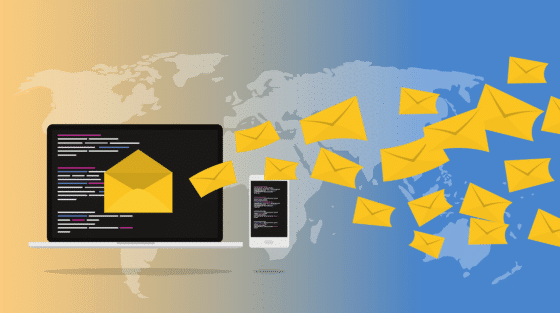Email has long been an essential tool for business communications, but a poll conducted by Sendmail. Revealed it caused tension, confusion or other negative consequences for 64% of professionals.
So, how can you avoid this with your emails? And how can you write emails that give the desired results? In this article, we review the strategies you can use to ensure that your use of email is clear, effective, and successful.
An average office worker receives about 80 emails a day. With this volume of mail, individual messages can easily be forgotten. Follow these simple rules so that your emails are noticed and used.
- Do not communicate too much by email.
- Make good use of objects.
- Make clear and brief messages.
- Be polite.
- Check your tone.
- Reread.
Do not communicate too much by email
One of the biggest sources of stress at work is the sheer volume of emails people receive. So, before you start writing an email, ask yourself: “Is this really necessary?”
In this context, you should use the telephone or instant messaging to deal with questions likely to be the subject of back discussions. Use a communications planning tool and identify the best channels for different types of messages.
Whenever possible, give the bad news in person. It helps you communicate with empathy, compassion and understanding and redeem yourself if your message has been wrongly taken.
Make good use of objects
A newspaper headline does two things: it grabs your attention and summarizes the article so you can decide whether to read it or not. Your email subject line should do the same.
An object empty space is more likely to be overlooked or rejected as “spam”. So always use a few well-chosen words to tell the recipient what the email is about.
You might want to include the date in the subject line if your message is part of a regular email series, such as a weekly project report. For a message that requires a response, you can also include a call to action, such as "Please by November 7."
A well-written subject line, like the one below, provides the most important information without the recipient even having to open the email. This serves as a prompt that reminds recipients of your meeting whenever they check their inbox.
| Bad example Good example |
|
| Subject: meeting | Subject: Meeting on the GATEWAY process - 09h the 25 February 2018 |
Keep messages clear and brief
Emails, like traditional business letters, must be clear and concise. Keep your sentences short and precise. The body of the email must be direct and informative, and contain all relevant information.
Unlike traditional letters, sending multiple emails does not cost more than sending one. So if you need to communicate with someone on a number of different topics, consider writing a separate email for each. This clarifies the message and allows your correspondent to respond to one topic at a time.
| Bad example | Good example |
| Subject: Revisions for the sales report
Hi Michelin,
Thank you for sending this report last week. I read it yesterday and feel that Chapter 2 requires more specific information about our sales figures. I also think the tone could be more formal.
In addition, I wanted to inform you that I have scheduled a meeting with the public relations department on the new advertising campaign this Friday. She's at 11:00 a.m. and will be in the small conference room.
Please let me know if you are available.
Thank you,
Camille |
Subject: Revisions for the sales report
Hi Michelin,
Thank you for sending this report last week. I read it yesterday and feel that Chapter 2 requires more specific information about our sales figures.
I also think that the tone could be more formal.
Could you modify it with these comments in mind?
Thank you for your hard work!
Camille
(Camille then sends another email about the PR meeting.) |
It is important to strike a balance here. You don't want to bombard someone with emails, and it makes sense to combine several related points into one post. When this happens, keep it simple with numbered paragraphs or bullet points, and consider “cutting” the information into small, well-organized units to make it easier to digest.
Also note that in the good example above, Camille specified what she wanted Michelin to do (in this case, change the report). If you help people know what you want, they're more likely to give it to you.
be polite
People often think that emails can be less formal than traditional letters. But the messages you send are a reflection of your own professionalism, values and attention to detail are important, so a certain level of formality is needed.
Unless you're on good terms with someone, avoid informal language, slang, jargon, and inappropriate abbreviations. Emoticons can be helpful in clarifying your intention, but it's best to use them only with people you know well.
Close your message with "Sincerely," "Good day / evening to you" or "Good to you," depending on the situation.
Recipients may choose to print emails and share them with others, so always be polite.
Check the tone
When we meet people face-to-face, we use their body language, vocal tones, and facial expressions to evaluate how they feel. E-mail deprives us of this information, which means we can not know when people have misunderstood our messages.
Your choice of words, sentence length, punctuation, and capitalization can easily be misinterpreted without visual and auditory cues. In the first example below, Louise might think that Yann is frustrated or angry, but in reality, he feels good.
| Bad example | Good example |
| Louise,
I need your report by 17 p.m. today or I'll miss my deadline.
Yann |
Hi Louise,
Thank you for your hard work on this report. Could you provide me your version before 17 hours, so that I do not miss my deadline?
Thank you in advance,
Yann |
Think about the "feeling" of your email emotionally. If your intentions or emotions may be misunderstood, find a less ambiguous way of formulating your words.
proofreading
Finally, before clicking "Send", take a moment to check your email for any spelling, grammar and punctuation errors. Your emails are as much a part of your professional image as the clothes you wear. It is therefore frowned upon to send a message containing errors in series.
During proofreading, pay close attention to the length of your email. People are more likely to read short, concise emails than long, disconnected emails, so make sure your emails are as short as possible, without excluding the necessary information.
Key points
Most of us spend a good part of our day at read and compose emails. But the messages we send can be confusing for others.
To write effective emails, ask yourself first if you really should use this channel. Sometimes it may be better to take the phone.
Make your emails concise and precise. Send them only to people who really need to see them and clearly indicate what you would like the recipient to do next.
Remember that your emails are a reflection of your professionalism, your values and your attention to detail. Try to imagine how others might interpret the tone of your message. Be polite and always double check what you have written before hitting “send”.





